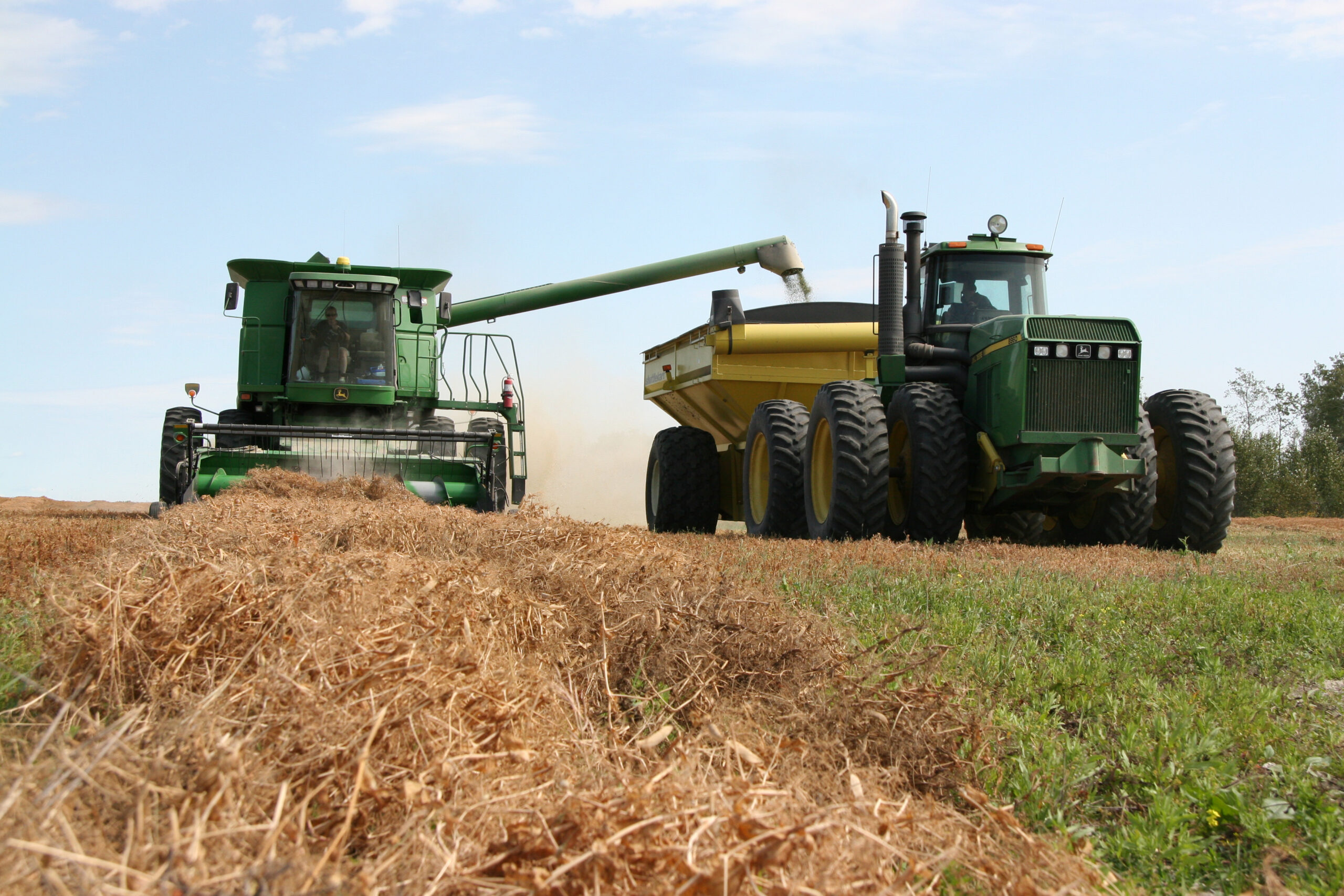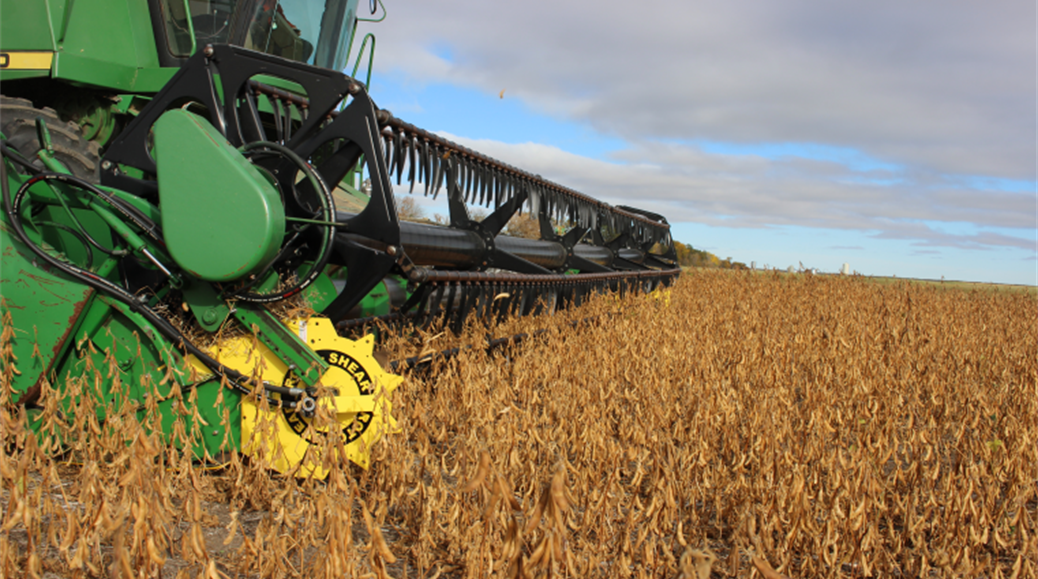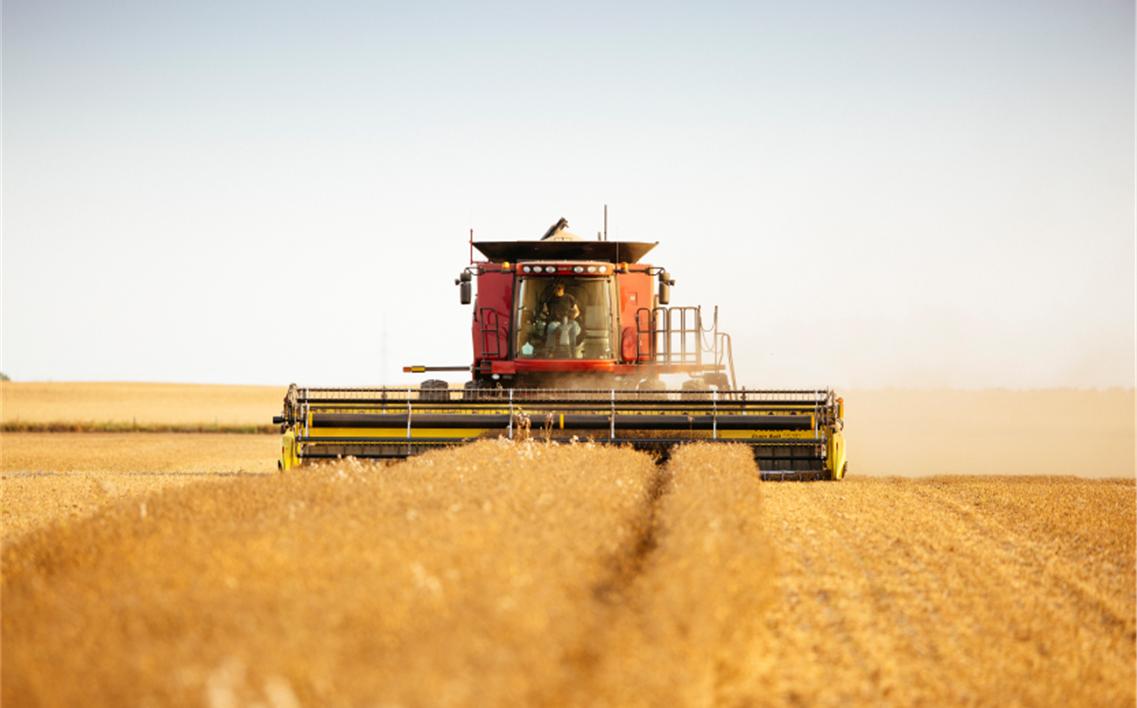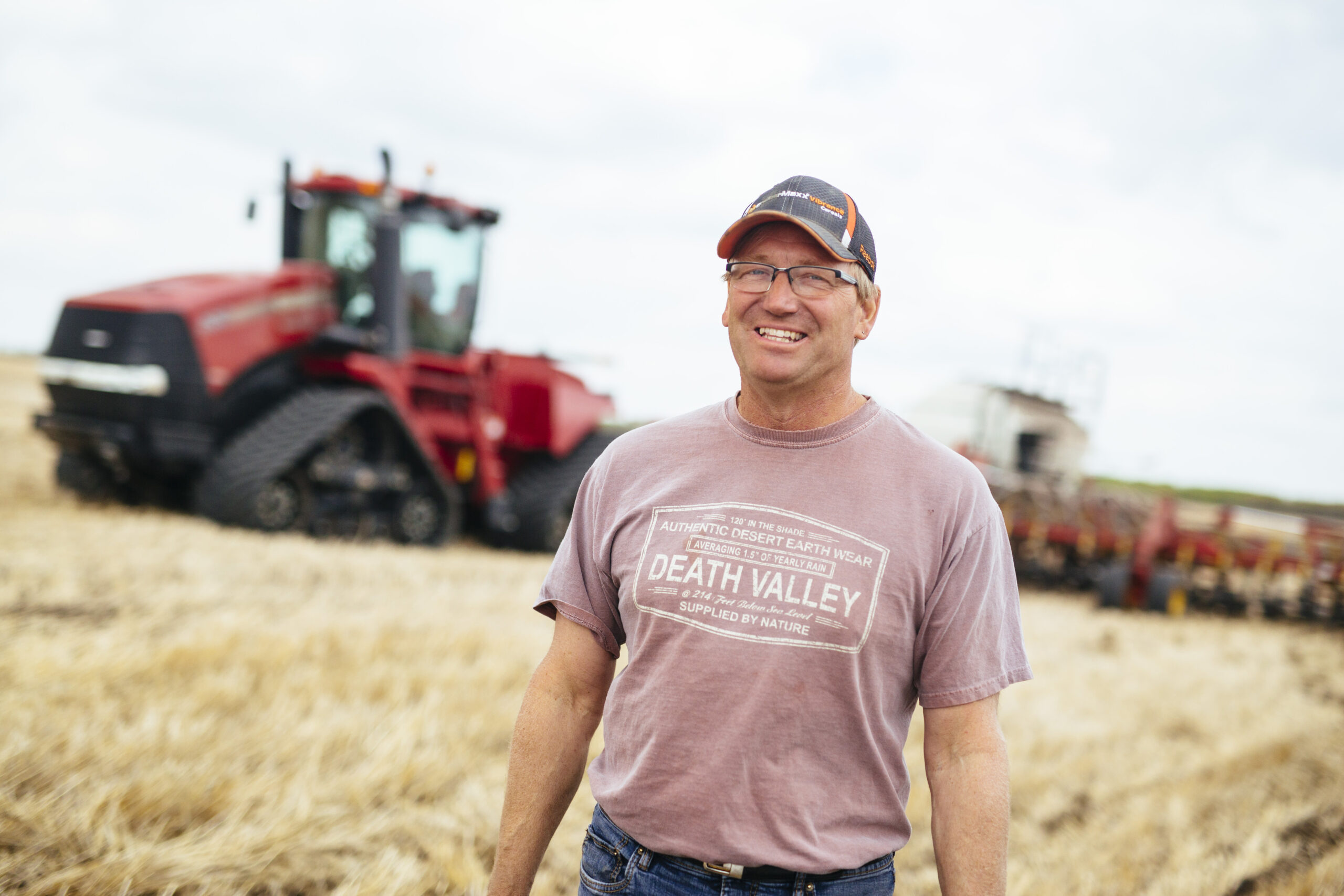Jenifer Heyden, MSc., PAg, Regional Livestock Specialist, Saskatchewan Ministry of Agriculture
The lack of moisture through the spring and thus far this growing season has severely reduced the hay and forage crops in many parts of the province. The dry conditions have created challenges for livestock producers and sourcing winter feed has become the number one priority. Feeding straw rations does not compare to feeding good quality hay, but straw can be a viable component in a winter feeding plan. Compared to hay, straw is less expensive and is usually available. It is important to have feeds tested and rations balanced in order to meet the animal’s requirements.
This fall there may be pea hay, silage, or straw available to livestock producers. Pea hay and silage quality are affected by the amount of leaf material and pods present in the forage, as well as stage of maturity at harvest. Nitrates generally do not accumulate in a legume plant such as peas. Various plant diseases affecting peas do not contain any toxins or compounds considered harmful to cattle. However, pea straw can be very dusty and coarse or stemmy, depending on stage of maturity at harvest, which can affect palatability and intake. Dusty feed may cause breathing problems in cattle.
There is very little difference in the feed value of cereal straws, most hover around four per cent crude protein and 45 per cent total digestible nutrients (TDN, a measure of energy in the feed). In general, oat straw usually makes better feed than barley straw, which in turn makes better feed than wheat straw. Year old straw tends to be more palatable than freshly baled straw. Voluntary consumption of straw is directly related to the fibre component of the straw. Due to straw’s higher fibre content, it takes longer for a cow to digest straw than it does to digest hay or grain, limiting intake. Cows typically have a higher voluntary intake of barley and oat straw over wheat straw, but intake of all cereal straws tends to be lower than for pea or lentil straw.
Pea and lentil straw have higher levels of protein than cereal straws, and energy levels are comparable. However, the nutrient values for pea straw are highly variable and a feed analysis is very beneficial and suggested. A study in Alberta on over 450 pea fields indicated averages ranging from 4.72 per cent crude protein to 12.5 per cent crude protein over three years. An overall average of 7.5 per cent crude protein leaves room for error. Variability is huge and needs to be considered. This variability in nutrient value is likely a reflection of soil fertility, moisture, environment, and current growing conditions. Palatability and intake can be quite variable as well; at times cattle will devour pea straw, at other times avoid it. Removing other forages for a day or two when first introducing pea straw will encourage better intakes. Processing pea straw by grinding or chopping it, with a mix mill or hay buster, can also help with palatability and intake.
Straw does not contain adequate levels of energy, protein, minerals, or vitamins to winter a cow. Cows cannot eat and digest enough straw to meet their nutritional requirements, although it can be utilized in balanced rations to help stretch feed resources. It is advisable to feed cows hay instead of straw starting at least six weeks prior to calving and throughout the lactation period (until the cows are turned out to spring pasture).
Pea straw can be a great addition to winter feed rations for cattle. However, it is the one straw variety that changes greatly from year to year, field to field, and fails to give consistent results in terms of crude protein and energy. Thus, it is important to test for nutrient content so balanced rations can be formulated to meet the animals changing requirements. For more information on this or other livestock related topics, contact Jenifer Heyden at (306) 446-7962 in North Battleford or call the Agriculture Knowledge Centre at 1-866-457-2377, or check out the Saskatchewan Ministry of Agriculture’s website, www.agriculture.gov.sk.ca.
The Government of Saskatchewan has great On-Line Calculators to help with feed decisions.



